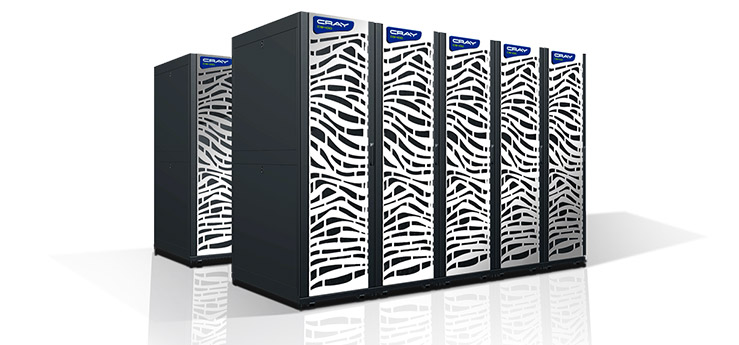 Today Cray announced that the Swiss National Supercomputing Centre (CSCS) has installed a Cray CS-Storm cluster supercomputer to power the operational numerical weather forecasts run by the Swiss Federal Office of Meteorology and Climatology (MeteoSwiss). This is the first time a GPU-accelerated supercomputer has been used to run production numerical weather models for a major national weather service.
Today Cray announced that the Swiss National Supercomputing Centre (CSCS) has installed a Cray CS-Storm cluster supercomputer to power the operational numerical weather forecasts run by the Swiss Federal Office of Meteorology and Climatology (MeteoSwiss). This is the first time a GPU-accelerated supercomputer has been used to run production numerical weather models for a major national weather service.
The two-cabinet, Cray CS-Storm system at CSCS is providing the meteorologists at MeteoSwiss with a new supercomputing platform designed to meet the computational challenges of delivering more detailed forecasts. With a powerful combination of NVIDIA Tesla K80 GPU accelerators, the flagship of the NVIDIA Tesla Accelerated Computing Platform, and Intel® Xeon® processors, the Cray CS-Storm has a peak performance of up to 15 teraflops per node. The system also uses liquid cooling to deliver a room neutral design, where no additional load is placed on room cooling.
Located in Lugano, Switzerland, CSCS develops and provides key supercomputing capabilities required to solve important problems to science and society. The Centre enables world-class research with a scientific user lab that is available to domestic and international researchers in the industry and business sectors. The new Cray CS-Storm system is located at CSCS and is being used by MeteoSwiss, the Swiss national weather and climate service, to run advanced simulations and a higher number of daily forecasts – up to eight a day.
High-quality weather forecasts always depend upon processing power,” said CSCS Director Thomas Schulthess. “The GPUs and the reengineered code allow us to increase the simulation performance 40 times but remain within the same energy and facility footprint of the supercomputer that we installed for MeteoSwiss in 2012. Moreover, thanks to the GPU technology we spend three times less on power compared to a system built entirely with conventional processors.”
The Cray CS-Storm system is one of the most powerful single-node cluster architectures available today, and is designed to support highly scalable applications in areas such as energy, manufacturing, earth sciences, life sciences, financial services, machine learning and geospatial intelligence. The system leverages the supercomputing architecture of the Cray CS400 system, and includes the Cray Advanced Cluster Engine cluster management software and the complete Cray Programming Environment on CS.
Today’s weather and climate models are ingrained with massive amounts of data and science that have increasingly demanding compute requirements,” said Barry Bolding, Cray’s senior vice president and chief strategy officer. “With an eight-to-two ratio of GPU accelerators to CPUs, the Cray CS-Storm system at MeteoSwiss is a powerful tool for running production models at a much higher resolution and granularity. This groundbreaking use of the Cray CS-Storm system to run data-intensive, operational weather forecasts is a milestone in supercomputing.”
Sign up for our insideHPC Newsletter




